Abstract
Acetaminophen-induced hepatotoxicity results from hepatic enzymatic oxidation of acetaminophen to a toxic, electrophilic intermediate. Acetaminophen is ordinarily eliminated after conjugation with glucuronic acid and sulfate to nontoxic derivatives. Cimetidine has been shown to inhibit the hepatic oxidation of a number of drugs and to protect rats from acetaminophen-induced hepatic necrosis. The aim of this study was to define the mechanism by which cimetidine reduced acetaminophen-induced hepatic necrosis and to determine whether inhibition of formation of the reactive metabolite(s) of acetaminophen occurred also in man. In vivo cimetidine pretreatment decreased covalent binding of [3H]acetaminophen to the liver from 552 +/- 23.8 to 170 +/- 31.6 nmol/g protein 2 h after a toxic dose of acetaminophen in 3-methylcholanthrene pretreated rats (P less than 0.05). Cimetidine pretreatment also significantly reduced the rate of hepatic glutathione depletion. Both cimetidine and metiamide produced dose-dependent inhibition of acetaminophen oxidation in vitro, whereas inhibition by ranitidine and cimetidine sulfoxide was quantitatively less. Inhibition of acetaminophen oxidation by cimetidine and metiamide was primarily competitive with an inhibition constant (Ki) of 130 +/- 16 and 200 +/- 50 microM, respectively. By contrast, cimetidine inhibited acetaminophen glucuronidation minimally with a Ki of 1.39 +/- 0.23 mM. Similar results were obtained using human liver microsomes as a source of enzymes. In a dose-related fashion, cimetidine also reduced acetaminophen-induced toxicity to human lymphocytes when incubated with microsomes and NADPH. Pharmacokinetics of acetaminophen elimination were studied in normal volunteers with and without co-administration of cimetidine 300 mg every 6 h. In normal volunteers, cimetidine decreased the fractional clearance of the oxidized (potentially toxic) metabolites of acetaminophen more than the conjugated metabolites. This finding confirmed the hypothesis that cimetidine is a relatively selective inhibitor of the oxidation of acetaminophen to reactive metabolites in man as well as in animals. When considered together with the results of previous studies showing improved survival and decreased hepatoxicity in acetaminophen-poisoned animals, the present results provide a rational basis for assessing possible benefits of cimetidine treatment of acetaminophen overdoses in man.
Full text
PDF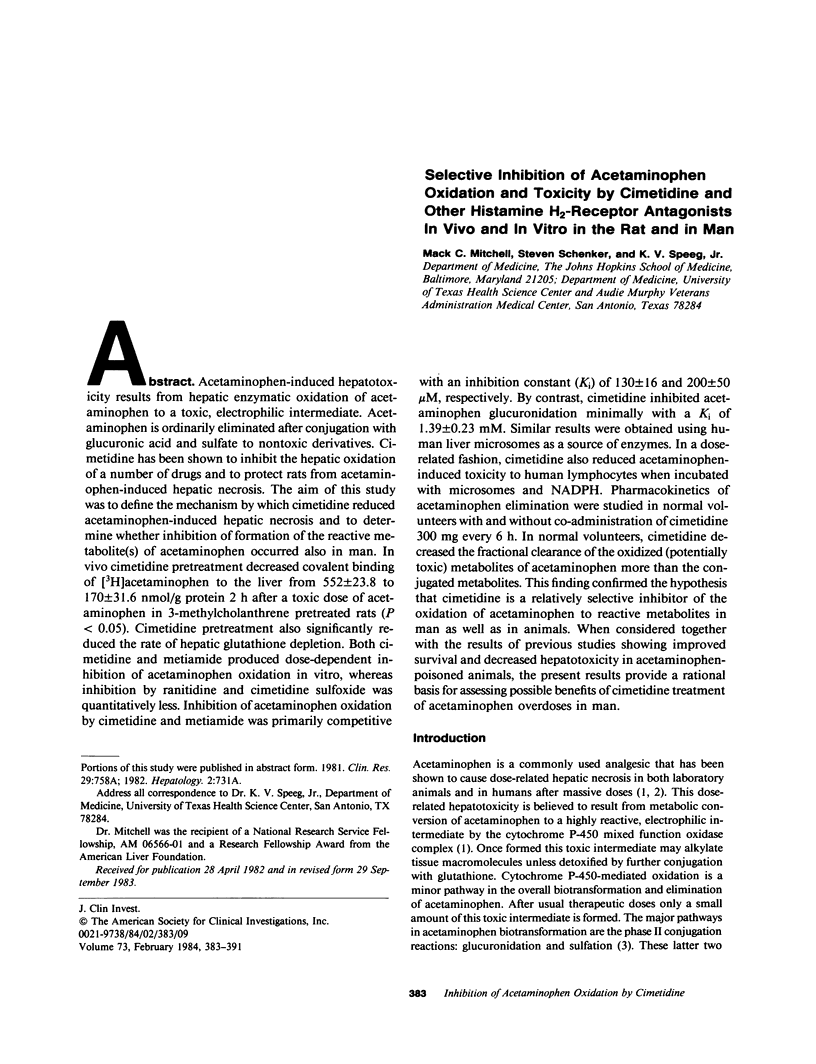
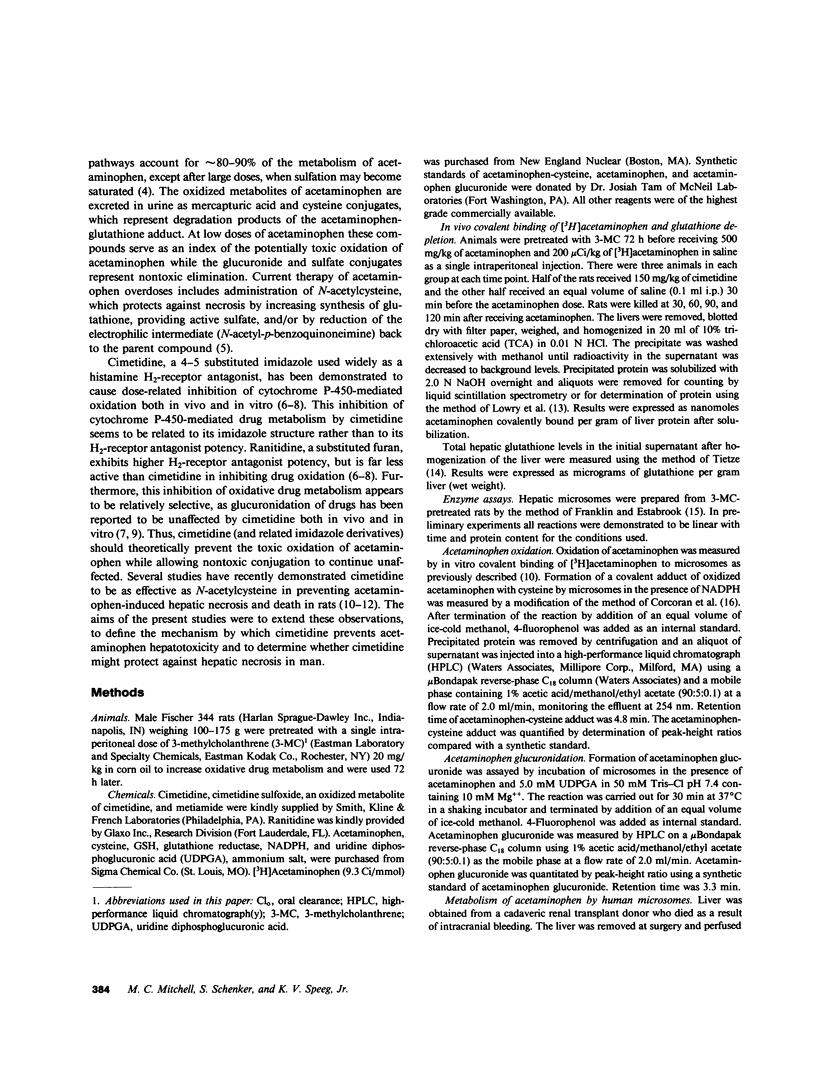
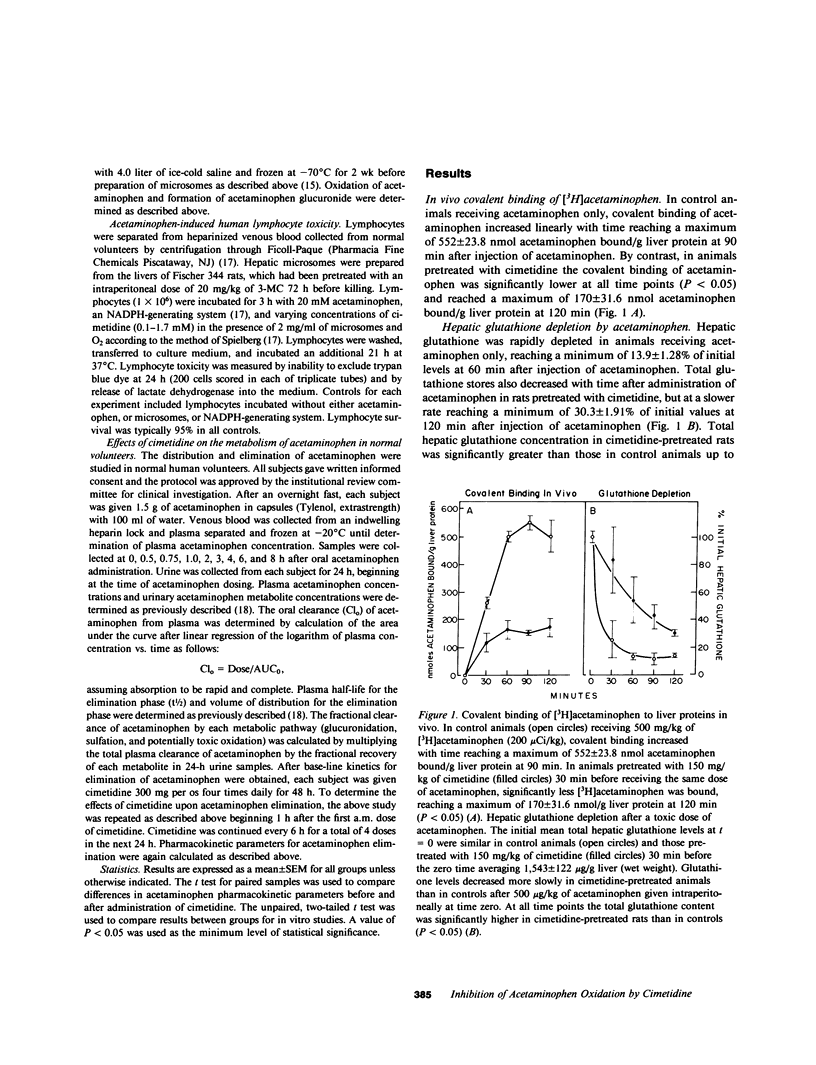
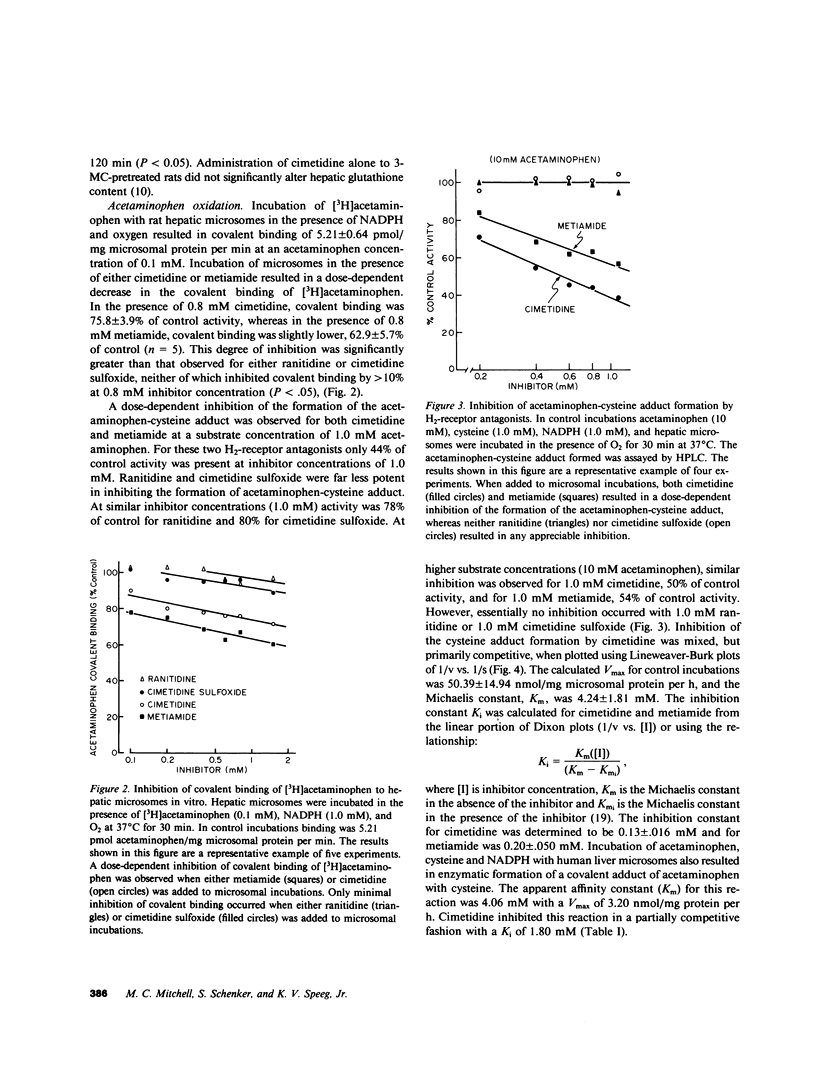
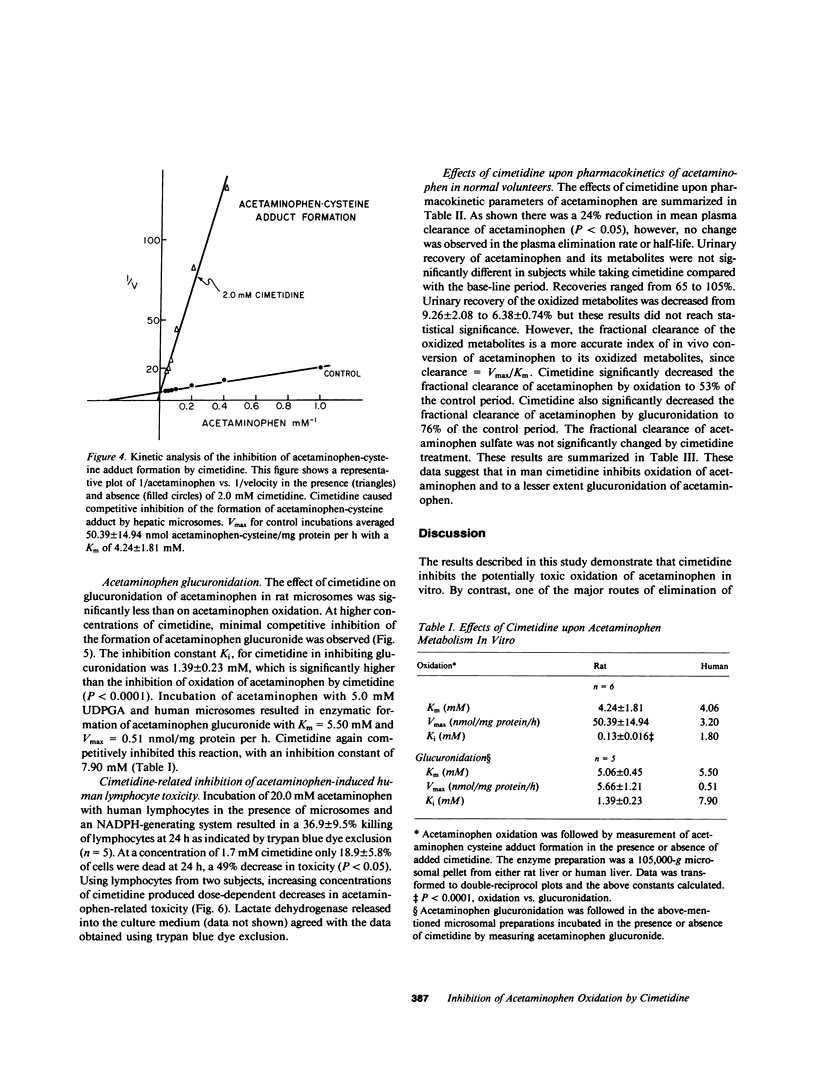
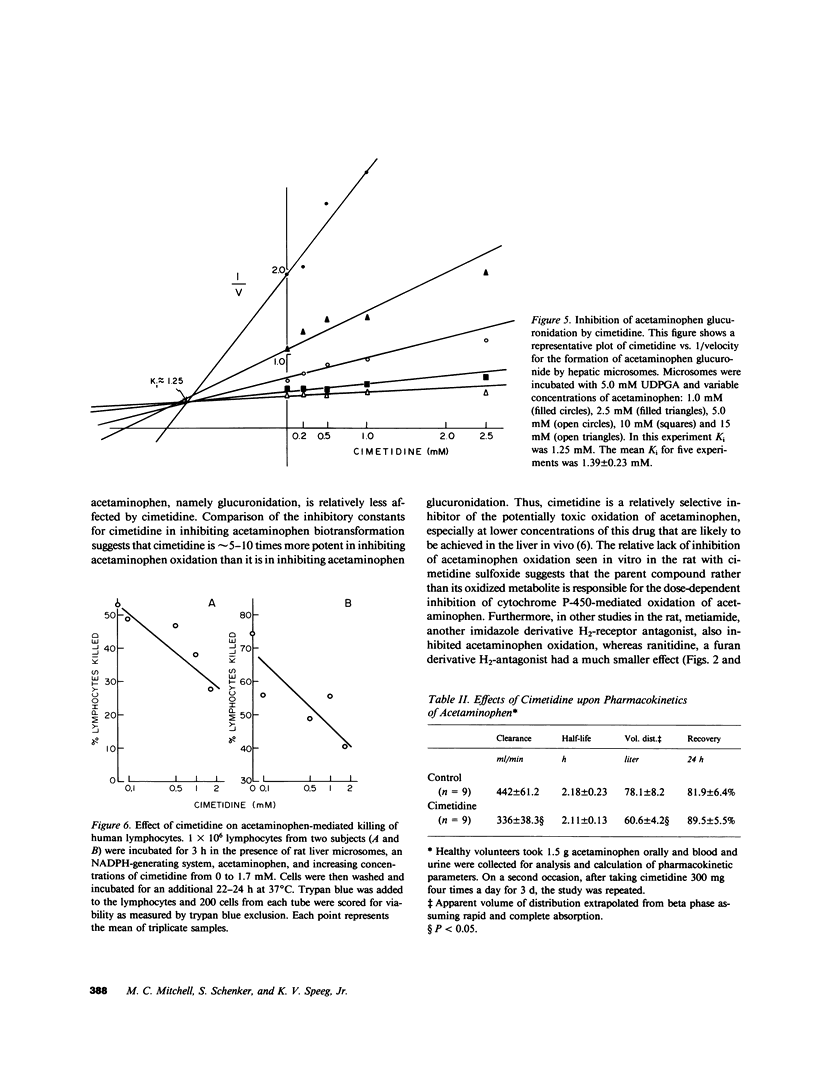
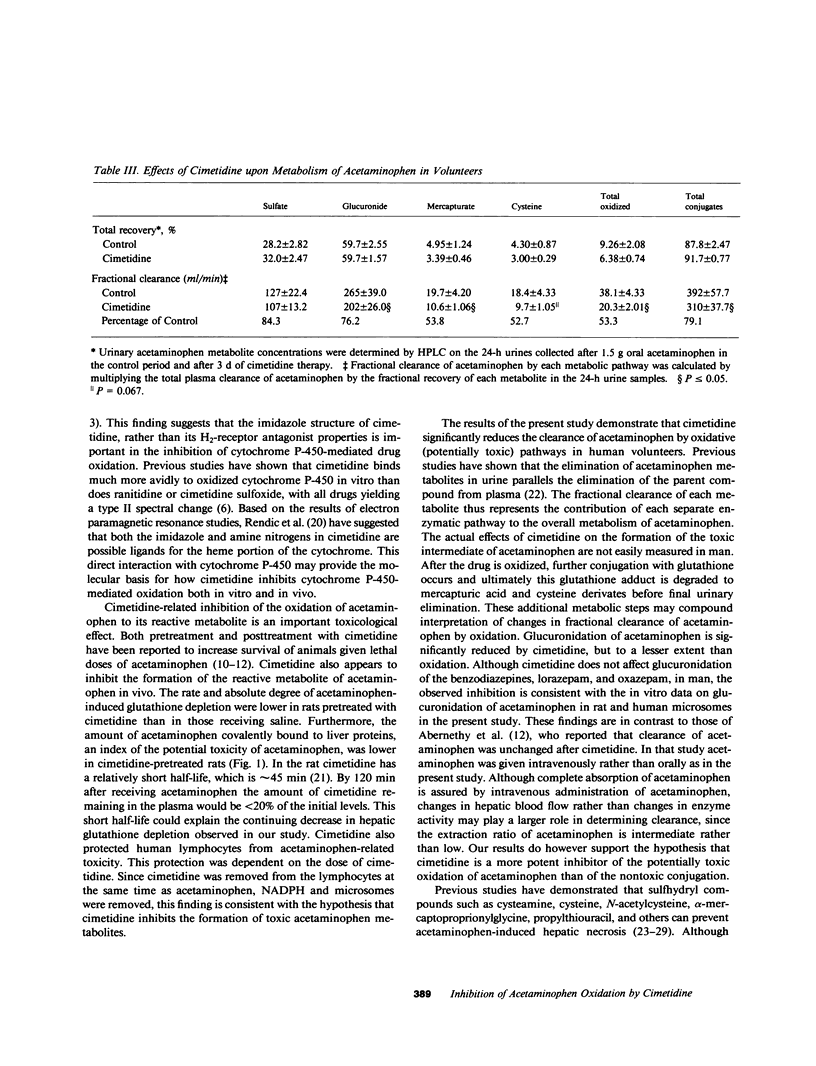
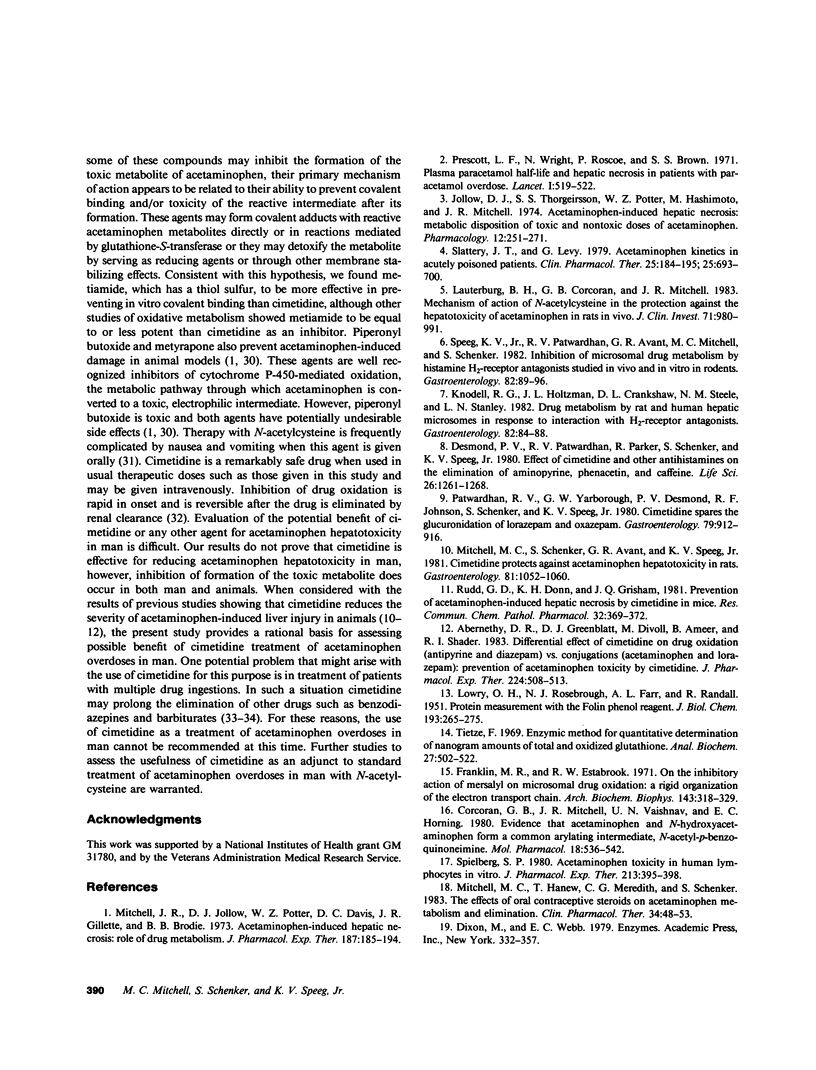

Selected References
These references are in PubMed. This may not be the complete list of references from this article.
- Abernethy D. R., Greenblatt D. J., Divoll M., Ameer B., Shader R. I. Differential effect of cimetidine on drug oxidation (antipyrine and diazepam) vs. conjugation (acetaminophen and lorazepam): prevention of acetaminophen toxicity by cimetidine. J Pharmacol Exp Ther. 1983 Mar;224(3):508–513. [PubMed] [Google Scholar]
- Corcoran G. B., Mitchell J. R., Vaishnav Y. N., Horning E. C. Evidence that acetaminophen and N-hydroxyacetaminophen form a common arylating intermediate, N-acetyl-p-benzoquinoneimine. Mol Pharmacol. 1980 Nov;18(3):536–542. [PubMed] [Google Scholar]
- Crome P., Vale J. A., Volans G. N., Widdop B., Goulding R. Oral methionine in the treatment of severe paracetamol (Acetaminophen) overdose. Lancet. 1976 Oct 16;2(7990):829–830. doi: 10.1016/s0140-6736(76)91211-3. [DOI] [PubMed] [Google Scholar]
- Cummings A. J., King M. L., Martin B. K. A kinetic study of drug elimination: the excretion of paracetamol and its metabolites in man. Br J Pharmacol Chemother. 1967 Feb;29(2):150–157. doi: 10.1111/j.1476-5381.1967.tb01948.x. [DOI] [PMC free article] [PubMed] [Google Scholar]
- Desmond P. V., Patwardhan R. V., Schenker S., Speeg K. V., Jr Cimetidine impairs elimination of chlordiazepoxide (Librium) in man. Ann Intern Med. 1980 Aug;93(2):266–268. doi: 10.7326/0003-4819-93-2-266. [DOI] [PubMed] [Google Scholar]
- Desmond P. V., Patwardhan R., Parker R., Schenker S., Speeg K. V., Jr Effect of cimetidine and other antihistaminics on the elimination of aminopyrine, phenacetin and caffeine. Life Sci. 1980 Apr 14;26(15):1261–1268. doi: 10.1016/0024-3205(80)90071-5. [DOI] [PubMed] [Google Scholar]
- Franklin M. R., Estabrook R. W. On the inhibitory action of mersalyl on microsomal drug oxidation: a rigid organization of the electron transport chain. Arch Biochem Biophys. 1971 Mar;143(1):318–329. doi: 10.1016/0003-9861(71)90213-x. [DOI] [PubMed] [Google Scholar]
- Goldstein M., Nelson E. B. Metyrapone as a treatment for acetaminophen (paracetamol) toxicity in mice. Res Commun Chem Pathol Pharmacol. 1979 Jan;23(1):203–206. [PubMed] [Google Scholar]
- Jollow D. J., Thorgeirsson S. S., Potter W. Z., Hashimoto M., Mitchell J. R. Acetaminophen-induced hepatic necrosis. VI. Metabolic disposition of toxic and nontoxic doses of acetaminophen. Pharmacology. 1974;12(4-5):251–271. doi: 10.1159/000136547. [DOI] [PubMed] [Google Scholar]
- Klotz U., Reimann I. Delayed clearance of diazepam due to cimetidine. N Engl J Med. 1980 May 1;302(18):1012–1014. doi: 10.1056/NEJM198005013021807. [DOI] [PubMed] [Google Scholar]
- Knodell R. G., Holtzman J. L., Crankshaw D. L., Steele N. M., Stanley L. N. Drug metabolism by rat and human hepatic microsomes in response to interaction with H2-receptor antagonists. Gastroenterology. 1982 Jan;82(1):84–88. [PubMed] [Google Scholar]
- LOWRY O. H., ROSEBROUGH N. J., FARR A. L., RANDALL R. J. Protein measurement with the Folin phenol reagent. J Biol Chem. 1951 Nov;193(1):265–275. [PubMed] [Google Scholar]
- Labadarios D., Davis M., Portmann B., Williams R. Paracetamol-induced hepatic necrosis in the mouse-relationship between covalent binding, hepatic glutathione depletion and the protective effect of alpha-mercaptopropionylglycine. Biochem Pharmacol. 1977 Jan 1;26(1):31–35. doi: 10.1016/0006-2952(77)90126-5. [DOI] [PubMed] [Google Scholar]
- Lauterburg B. H., Corcoran G. B., Mitchell J. R. Mechanism of action of N-acetylcysteine in the protection against the hepatotoxicity of acetaminophen in rats in vivo. J Clin Invest. 1983 Apr;71(4):980–991. doi: 10.1172/JCI110853. [DOI] [PMC free article] [PubMed] [Google Scholar]
- Mitchell J. R., Jollow D. J., Potter W. Z., Davis D. C., Gillette J. R., Brodie B. B. Acetaminophen-induced hepatic necrosis. I. Role of drug metabolism. J Pharmacol Exp Ther. 1973 Oct;187(1):185–194. [PubMed] [Google Scholar]
- Mitchell J. R., Thorgeirsson S. S., Potter W. Z., Jollow D. J., Keiser H. Acetaminophen-induced hepatic injury: protective role of glutathione in man and rationale for therapy. Clin Pharmacol Ther. 1974 Oct;16(4):676–684. doi: 10.1002/cpt1974164676. [DOI] [PubMed] [Google Scholar]
- Mitchell M. C., Hanew T., Meredith C. G., Schenker S. Effects of oral contraceptive steroids on acetaminophen metabolism and elimination. Clin Pharmacol Ther. 1983 Jul;34(1):48–53. doi: 10.1038/clpt.1983.127. [DOI] [PubMed] [Google Scholar]
- Mitchell M. C., Schenker S., Avant G. R., Speeg K. V., Jr Cimetidine protects against acetaminophen hepatotoxicity in rats. Gastroenterology. 1981 Dec;81(6):1052–1060. [PubMed] [Google Scholar]
- Patwardhan R. V., Johnson R. F., Sinclair A. P., Schenker S., Speeg K. V., Jr Lack of tolerance and rapid recovery of cimetidine-inhibited chlordiazepoxide (Librium) elimination. Gastroenterology. 1981 Sep;81(3):547–551. [PubMed] [Google Scholar]
- Patwardhan R. V., Yarborough G. W., Desmond P. V., Johnson R. F., Schenker S., Speeg K. V., Jr Cimetidine spares the glucuronidation of lorazepam and oxazepam. Gastroenterology. 1980 Nov;79(5 Pt 1):912–916. [PubMed] [Google Scholar]
- Prescott L. F., Newton R. W., Swainson C. P., Wright N., Forrest A. R., Matthew H. Successful treatment of severe paracetamol overdosage with cysteamine. Lancet. 1974 Apr 6;1(7858):588–592. doi: 10.1016/s0140-6736(74)92649-x. [DOI] [PubMed] [Google Scholar]
- Prescott L. F., Park J., Ballantyne A., Adriaenssens P., Proudfoot A. T. Treatment of paracetamol (acetaminophen) poisoning with N-acetylcysteine. Lancet. 1977 Aug 27;2(8035):432–434. doi: 10.1016/s0140-6736(77)90612-2. [DOI] [PubMed] [Google Scholar]
- Prescott L. F., Roscoe P., Wright N., Brown S. S. Plasma-paracetamol half-life and hepatic necrosis in patients with paracetamol overdosage. Lancet. 1971 Mar 13;1(7698):519–522. doi: 10.1016/s0140-6736(71)91125-1. [DOI] [PubMed] [Google Scholar]
- Rendić S., Sunjić V., Toso R., Kajfez F., Ruf H. H. Interaction of cimetidine with liver microsomes. Xenobiotica. 1979 Sep;9(9):555–564. doi: 10.3109/00498257909042321. [DOI] [PubMed] [Google Scholar]
- Rudd G. D., Donn K. H., Grisham J. W. Prevention of acetaminophen-induced hepatic necrosis by cimetidine in mice. Res Commun Chem Pathol Pharmacol. 1981 May;32(2):369–372. [PubMed] [Google Scholar]
- Slattery J. T., Levy G. Acetaminophen kinetics in acutely poisoned patients. Clin Pharmacol Ther. 1979 Feb;25(2):184–195. doi: 10.1002/cpt1979252184. [DOI] [PubMed] [Google Scholar]
- Speeg K. V., Jr, Patwardhan R. V., Avant G. R., Mitchell M. C., Schenker S. Inhibition of microsomal drug metabolism by histamine H2-receptor antagonists studied in vivo and in vitro in rodents. Gastroenterology. 1982 Jan;82(1):89–96. [PubMed] [Google Scholar]
- Spielberg S. P. Acetaminophen toxicity in human lymphocytes in vitro. J Pharmacol Exp Ther. 1980 May;213(2):395–398. [PubMed] [Google Scholar]
- Strubelt O., Siegers C. P., Schütt A. The curative effects of cysteamine, cysteine, and dithiocarb in experimental paracetamol poisoning. Arch Toxicol. 1974;33(1):55–64. doi: 10.1007/BF00297053. [DOI] [PubMed] [Google Scholar]
- Tietze F. Enzymic method for quantitative determination of nanogram amounts of total and oxidized glutathione: applications to mammalian blood and other tissues. Anal Biochem. 1969 Mar;27(3):502–522. doi: 10.1016/0003-2697(69)90064-5. [DOI] [PubMed] [Google Scholar]
- Weiner I. M., Roth L. Renal excretion of cimetidine. J Pharmacol Exp Ther. 1981 Mar;216(3):516–520. [PubMed] [Google Scholar]
- Yamada T., Ludwig S., Kuhlenkamp J., Kaplowitz N. Direct protection against acetaminophen hepatotoxicity by propylthiouracil. In vivo and in vitro studies in rats and mice. J Clin Invest. 1981 Mar;67(3):688–695. doi: 10.1172/JCI110084. [DOI] [PMC free article] [PubMed] [Google Scholar]


